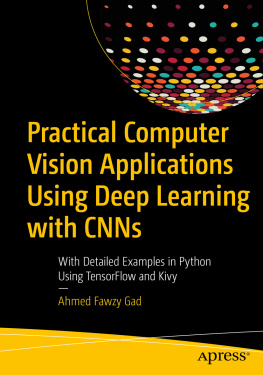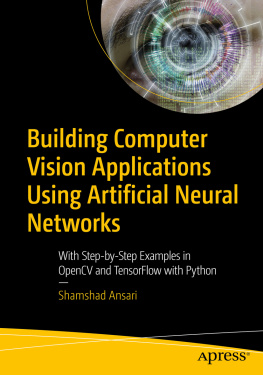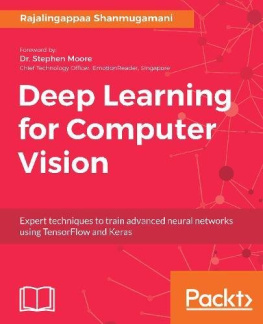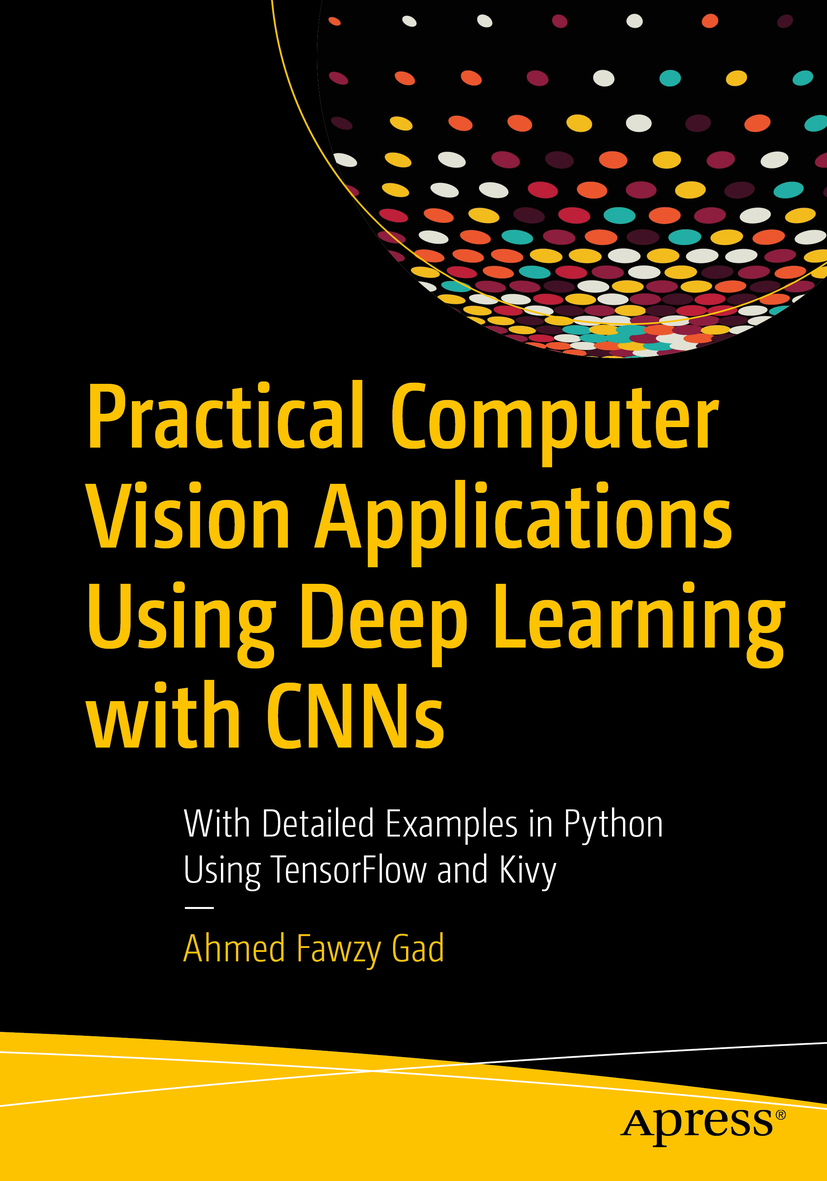Ahmed Fawzy Gad - Practical Computer Vision Applications Using Deep Learning with CNNs: With Detailed Examples in Python Using TensorFlow and Kivy
Here you can read online Ahmed Fawzy Gad - Practical Computer Vision Applications Using Deep Learning with CNNs: With Detailed Examples in Python Using TensorFlow and Kivy full text of the book (entire story) in english for free. Download pdf and epub, get meaning, cover and reviews about this ebook. year: 2019, publisher: Apress, genre: Children. Description of the work, (preface) as well as reviews are available. Best literature library LitArk.com created for fans of good reading and offers a wide selection of genres:
Romance novel
Science fiction
Adventure
Detective
Science
History
Home and family
Prose
Art
Politics
Computer
Non-fiction
Religion
Business
Children
Humor
Choose a favorite category and find really read worthwhile books. Enjoy immersion in the world of imagination, feel the emotions of the characters or learn something new for yourself, make an fascinating discovery.
- Book:Practical Computer Vision Applications Using Deep Learning with CNNs: With Detailed Examples in Python Using TensorFlow and Kivy
- Author:
- Publisher:Apress
- Genre:
- Year:2019
- Rating:3 / 5
- Favourites:Add to favourites
- Your mark:
Practical Computer Vision Applications Using Deep Learning with CNNs: With Detailed Examples in Python Using TensorFlow and Kivy: summary, description and annotation
We offer to read an annotation, description, summary or preface (depends on what the author of the book "Practical Computer Vision Applications Using Deep Learning with CNNs: With Detailed Examples in Python Using TensorFlow and Kivy" wrote himself). If you haven't found the necessary information about the book — write in the comments, we will try to find it.
Deploy deep learning applications into production across multiple platforms. You will work on computer vision applications that use the convolutional neural network (CNN) deep learning model and Python. This book starts by explaining the traditional machine-learning pipeline, where you will analyze an image dataset. Along the way you will cover artificial neural networks (ANNs), building one from scratch in Python, before optimizing it using genetic algorithms.
For automating the process, the book highlights the limitations of traditional hand-crafted features for computer vision and why the CNN deep-learning model is the state-of-art solution. CNNs are discussed from scratch to demonstrate how they are different and more efficient than the fully connected ANN (FCNN). You will implement a CNN in Python to give you a full understanding of the model.
After consolidating the basics, you will use TensorFlow to build a practical image-recognition model that you will deploy to a web server using Flask, making it accessible over the Internet. Using Kivy and NumPy, you will create cross-platform data science applications with low overheads.
This book will help you apply deep learning and computer vision concepts from scratch, step-by-step from conception to production.
What You Will Learn
Understand how ANNs and CNNs work
Create computer vision applications and CNNs from scratch using Python
Follow a deep learning project from conception to production using TensorFlow
Use NumPy with Kivy to build cross-platform data science applications
Who This Book Is ForData scientists, machine learning and deep learning engineers, software developers.
Ahmed Fawzy Gad: author's other books
Who wrote Practical Computer Vision Applications Using Deep Learning with CNNs: With Detailed Examples in Python Using TensorFlow and Kivy? Find out the surname, the name of the author of the book and a list of all author's works by series.







